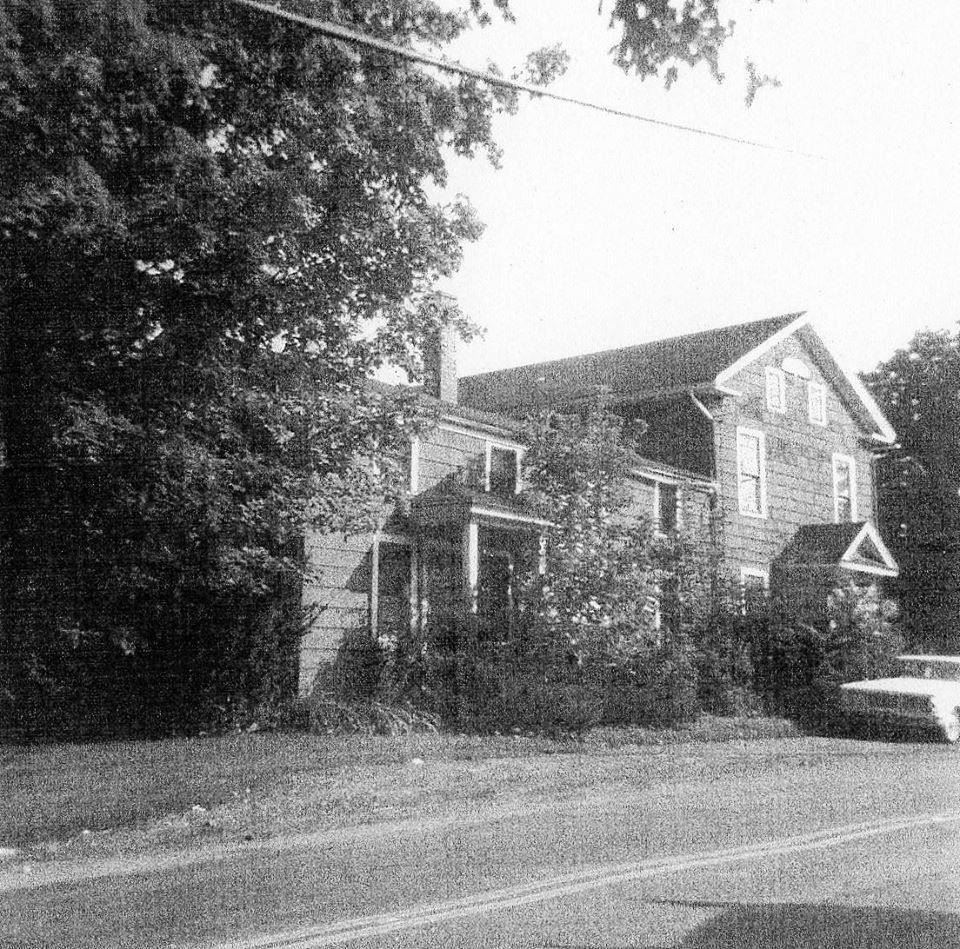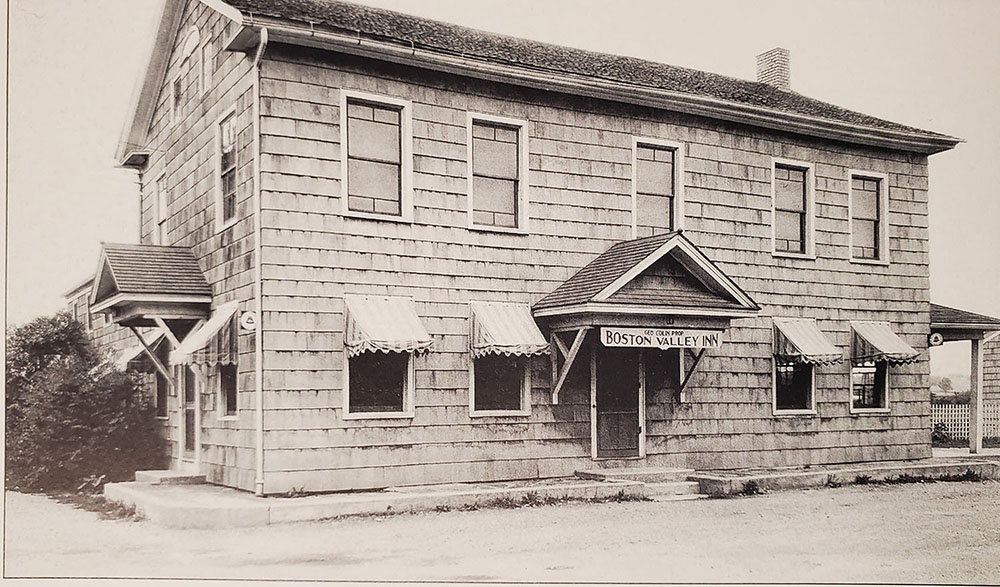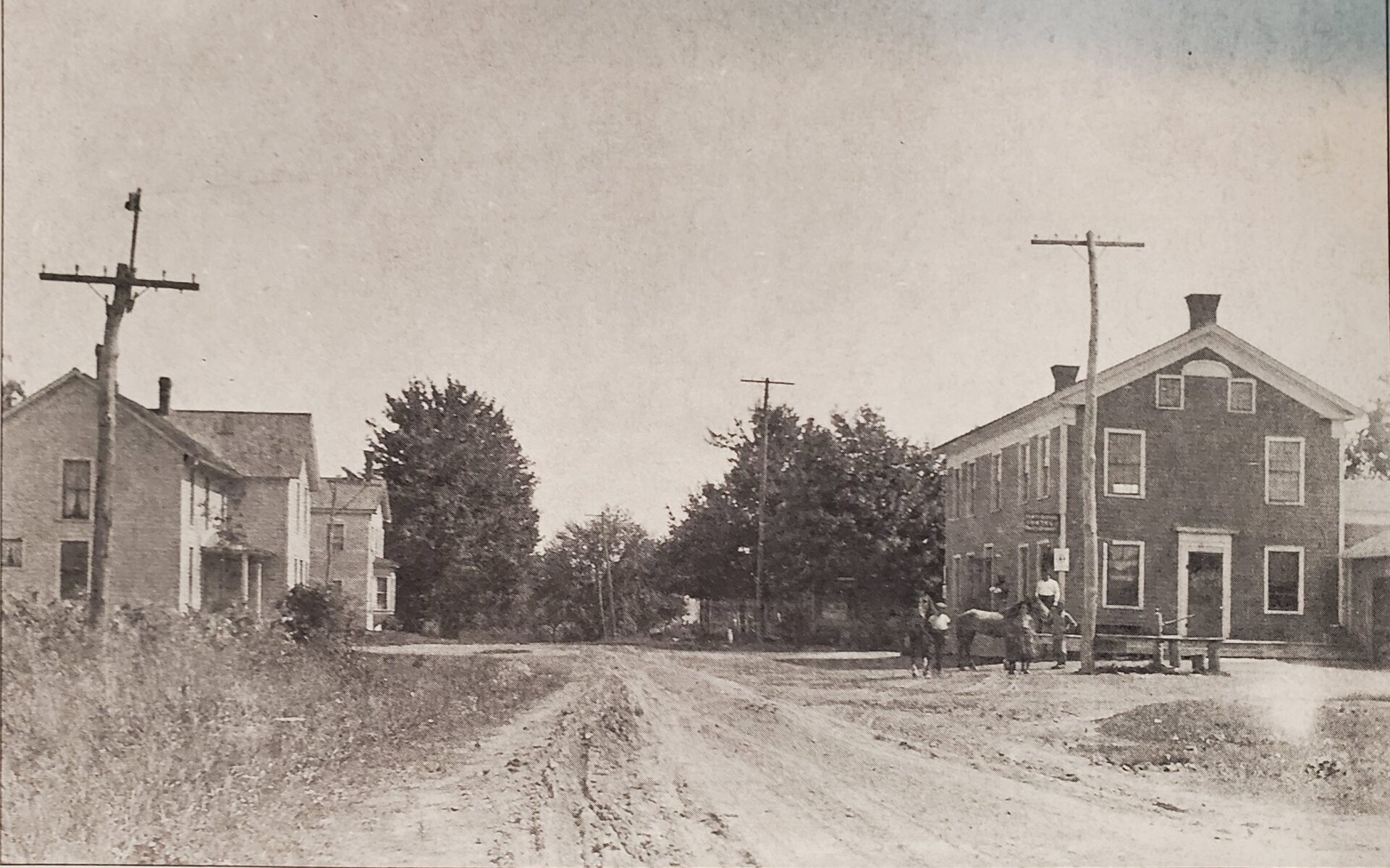Historical marker commemorates the Typhoid Fever epidemic that spread through the tainted well water of Fuller’s Tavern where 28 people became ill and 10 perished back in 1843.

Town of Boston— April 29, 2022 — The Town of Boston was awarded grant funding in 2021 through the William G. Pomeroy Foundation to replace a historical marker in North Boston. The historical marker is located on the corner of Boston State Road and Zimmerman Road and commemorates the Typhoid Fever epidemic of 1843. “The events that transpired in the hamlet of North Boston in the fall of 1843 contributed to identifying how typhoid fever comes about and allowed for medical advancements in the field of pathology. This ultimately led to a better understanding of the transmission of the typhoid bacteria thanks to the work of Doctor Austin Flint,” said Town of Boston Historian, Frank Gamel.
Historical Context
In the fall of 1843, a traveler from Warwick, Massachusetts stopped at Fuller’s Tavern, in the then-hamlet of North Boston, on his way through Western New York. What was meant to be a night of rest and a break for a traveler who was feeling ill, would soon turn into tragedy when the young guest perished on October 19th. At the time, the hamlet housed only forty-three people. Between October 19th and December 7th of 1843, twenty-eight residents fell ill and ten eventually perished – all of whom appeared to be suffering from the same illness. After performing autopsies, Dr. Austin Flint had found all residents who suffered from the mysterious illness had drawn their water from the well at Fuller’s Tavern.
Dr. Flint then learned there had been a mild epidemic of disease in surrounding New England states. Flint’s reports concluded that Typhoid was the cause of death and illness within the hamlet and had entered the community in September through the traveler from Massachusetts who had fallen ill. When Dr. Flint’s report was published in the American Journal of Medical Science in 1845, he wrote “…these considerations collectively appear to my mind to establish by irrefragable evidence, the correctness of the opinion, that the disease in question was not our common remittent or bilious fever but was the typhoid fever of New England.”[i]
Years after this incident, researchers were able to use Dr. Flint’s autopsy report, along with English Physician William Budd’s research, to determine that Typhoid fever could be transmitted in drinking water. The Fuller’s Tavern privy was located a short distance from the well that many of the town residents had used, unaware that it had been contaminated. “This discovery may have helped lead to health procedures and inspections that now have nearly wiped out this once-common disease” wrote Steve Cozzens in the December 25th, 1997, edition of The Sun and the Erie County Independent.
The marker stand was installed by members of the Town of Boston Highway Department in the fall of 2021 and can now be viewed by all passersby. The Town would like to thank Town Historian Frank Gamel, Town Grant Writer Connie Miner, and the Town of Boston Highway Department for their extensive contributions to this project. The Town of Boston is looking at other potential grant opportunities to replace other historical markers in worn condition.



For more information, press only:
Allison Koczur, Confidential Secretary to Supervisor
716-941-6518 | [email protected]
For more information on historical events in the Town of Boston:
www.townofboston.com or e-mail [email protected]
A web page dedicated to this project can be found here: https://townofboston.com/boston-historical-markers/typhoid-marker/
[i] Flint A. Account of an Epidemic Fever Which Occurred at North Boston, Erie County N. Y. during the Months of October and November 1843. Buffalo Med J Mon Rev Med Surg Sci. 1845;1(4):91-95.
A PDF of this text can be found here.
